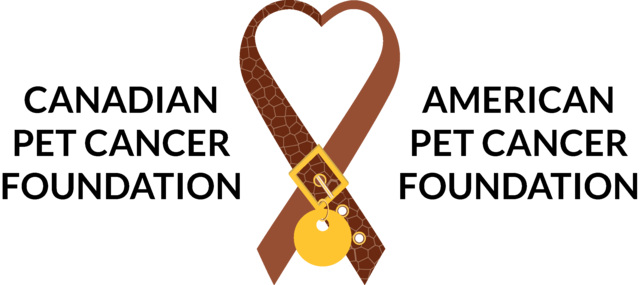- Staying Healthy for Cats
- Physical activity and cancer risk in cats
- Body weight and cancer risk in cats
PHYSICAL ACTIVITY AND CANCER RISK IN CATS
Importance of physical activity
Regular physical activity reduces the risk of diabetes mellitus, hypertension, cardiovascular diseases, obesity, osteoporosis, and cancer in humans. Additionally, it increases the quality of life and longevity. Cats may avoid similar health problems if they lead a healthy lifestyle.
Obesity and cancer risk
Cats in the wild roam free as active carnivores, always searching for food and seeking safety from predators. In contrast, we give domesticated cats an abundance of food and protect them from predators, which can lead to a sedentary life. The most common outcome of an inactive lifestyle is obesity due to excessive fat accumulation.
Excessive fat tissue releases hormones into the blood that cause chronic inflammation. This constant, low-grade inflammation plays a pivotal role in tumor formation, progression, and migration, increasing the risk of cancer in cats, such as breast and urinary tract cancer.
How to keep your cat active and healthy
Indoor cats need adequate playtime and appropriate types of play for a healthy lifestyle. These play activities should be closely related to their natural predatory behaviors, including stalking, chasing, pouncing, and biting. Play items that cats can pick up, toss in the air, and pounce on give them a fun physical activity close to their natural behavior. A few examples of safe, fun toys include:
- Wand toys (battery-operated, self-propelling toys that mimic prey)
- Ping pong balls inside a box or a bathtub
- Toys filled with catnip
- Light beam pointers
Avoid prolonged light beam pointer games to prevent your cat from getting frustrated. Changing toys every few days will maintain novelty and interest.
An active cat is a happy cat
Like us, our pets need an active lifestyle to prevent chronic health complications. A sedentary lifestyle increases the risk of various health problems, including cancer. It is easier than we think to keep our cats physically active, and by mimicking their natural behaviors, we can generate several play ideas. In addition to an active lifestyle, a healthy diet and a few treats will keep our pets healthy.

The Pet Cancer Foundation’s Website Editorial team is comprised of veterinarians, veterinary oncologists, and veterinary technicians, as well as scientific writers and editors who have attained their PhD’s in the life sciences, along with general editors and research assistants. All content found in this section goes through an extensive process with multiple review stages, to ensure this extended resource provides pet families with the most up-to-date information publicly available.
The team listing of those contributing to the information on this page is here:
Keep Your Pets Healthy Editorial Team
Last Updated: June 23, 2022
The Pet Cancer Foundation’s medical resource for pet owners is protected by copyright.
For reprint requests, please see our Content Usage Policy.

The Pet Cancer Foundation’s Medical Illustration team is comprised of medical illustration specialists and graphic designers that work in consultation with our team of experts to create the medical art found throughout our website. Though not all medical concepts require the assistance of imagery, when a page does contain a medical illustration, credit to the artist and our medical art director will be noted here.
The Pet Cancer Foundation’s medical imagery is protected by copyright and cannot be used without prior approval that includes a mutually signed licensing agreement. Please review our Content Usage Policy.
The following sources were referenced to write the content on this page:
Cannon, CM 2015, ‘Cats, cancer and comparative oncology’, vol. 2, no. 3, pp. 111-126.
Dhutia, H & Sharma, S 2015, ‘Playing it safe: exercise and cardiovascular health’, Practitioner, vol. 259, no. 1786, pp. 15-20.
German, AJ 2006, ‘The growing problem of obesity in dogs and cats’, J Nutr, vol. 136, no. 7, pp. 1940s-1946s.
German, AJ, Ryan, VH, German, AC, Wood, IS & Trayhurn, P 2010, ‘Obesity, its associated disorders and the role of inflammatory adipokines in companion animals’, Vet J, vol. 185, no. 1, pp.4-9.
Herron, ME & Buffington, CAT 2010, ‘Environmental enrichment for indoor cats’, Compend Contin Educ Vet, vol. 32, no. 12, pp. E4-E11.
Laflamme, DP 2012, ‘Companion Animals Symposium: Obesity in dogs and cats: What is wrong with being fat?’, J Anim Sci, vol. 90, no. 5, pp. 1653-1662.
Landsberg, GM, Hunthausen, WL & Ackerman, LJ 2012, Handbook of behavior problems of the dog and cat, 3 edn, Elsevier.
Loftus, JP & Wakshlag, JJ 2014, ‘Canine and feline obesity: a review of pathophysiology, epidemiology, and clinical management’, Vet Med, vol. 6, pp. 49-60.
Öhlund, M, Egenvall, A, Fall, T, Hansson-Hamlin, H, Röcklinsberg, H & Holst, B 2017, ‘Environmental risk factors for diabetes mellitus in cats’, J Vet Intern Med, vol. 31, no. 1, pp. 29-35.
Slingerland, LI, Fazilova, VV, Plantinga, EA, Kooistra, HS & Betnen, AC 2009, ‘Indoor confinement and physical inactivity rather than the proportion of dry food are risk factors in the development of feline type 2 diabetes mellitus’, Vet J, vol 179, no. 2, pp. 247-253.
Warburton, DER, Nicol, CW & Bredin, SSD 2006, ‘Health benefits of physical activity: the evidence’, CMAJ, vol. 174, no. 6, pp. 801-809.
Zoran, DL & Buffington, CAT 2011, ‘Effects of nutrition choices and lifestyle changes on the well-being of cats, a carnivore that has moved indoors’, J Am Vet Med Assoc, vol. 239, no. 5, pp. 596-606.
The Pet Cancer Foundation’s medical resource for pet owners is protected by copyright.
For reprint requests, please see our Content Usage Policy.
